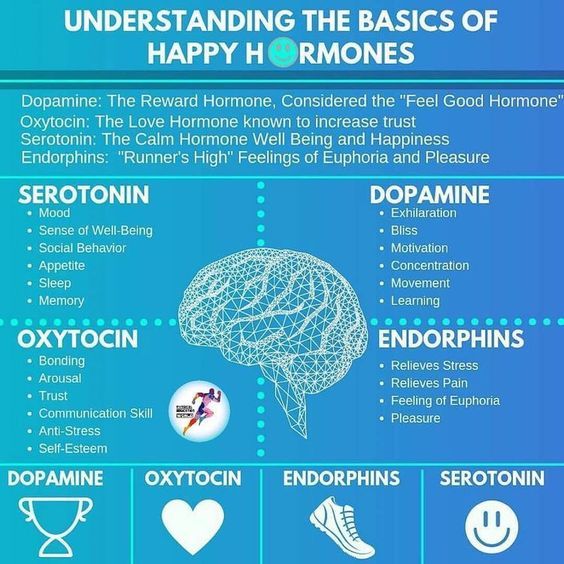“Mental health is not a destination, but a process. It’s about how you drive, not where you’re going.”
– Unknown
Did you know exercise can improve mood disorders? Regular aerobic exercise can reduce anxiety by making your brain’s “fight or flight” response less reactive. [1]
– People with mental disorders die 20 years younger than the general population. [2]
– 44.3 million people diagnosed with Depression and 37.3 million diagnosed with Anxiety Disorders within the EU. [2]
– The estimated prevalence of mental disorders in the WHO European Region in 2015 was 110 million, equivalent to 12% of the entire population at any one time. [2]
According the WHO mental health is defined as “a state of well-being, in which an individual realizes his or her own abilities, can cope with normal stresses of life, can work productively and is able to make a contribution to his or her community.” [2] Mental disorders are defined as “disturbances to a person’s mental health that are often characterized by some combination of troubled thoughts, emotions, behaviour and relationships with others. Examples of mental disorders include depression, anxiety disorders, conduct disorders, bipolar disorders and psychosis.” [2] Many factors come into play when discussing mental health and mental disorders. This diagram from WHO does a nice job representing the individual attributes, social circumstances and environmental factors surrounding mental health and well-being.

Image source [2]
How Exercise Improves Mood Disorders

Like we already stated, regular aerobic exercise can reduce anxiety my making your brain’s “fight or flight” response system less reactive. For example, an anxious person is exposed to physiological changes they fear such as a rapid heartbeat via regular aerobic exercise they will start to develop a tolerance for for a rapid heartbeat. [1] Weekly exercise such as cycling or aerobic group exercise classes, resistance, flexibility and balance movements have been shown to reduce depression symptoms. [1] According to Dr. Srini Pillay “exercise can be as effective as medication and psychotherapies. Regular exercise may boost by increasing a brain protein called BDNF that helps nerve fibers grow.” [1]
In a recent study researchers found individuals with attention-deficit disorder (ADHD) showed improved symptoms with a single 20-minute bout of moderate-intensity cycling. [1] The individuals showed increased ability to focus, increased energy levels, reduced feelings of confusion, fatigue and depression. [1]
Mindful movement such as qigong, tai chi, pilates, some forms of yoga create a meditative movement practice helping to alleviate depression symptoms. A weekly yoga practice has been shown to reduce the severity of individuals with post-traumatic stress disorder (PTSD) to the point some are no longer meeting the criteria for the diagnosis. [1]
The takeaway message is to start a weekly physical mindful movement practice that changes your posture, breathing and quiets your mind. The physical action of movement allows for your brain to calm down releasing stress reducing hormones to create a zen-like centered state of well-being.
How Synchronizing Your Movements Improves Mood Disorders

In 2014, psychologist Joanne Lumsden and her colleagues showed movement synchrony can make it easier to remember what people say and to recall what they look like. The researchers were also able to document a positive change in self-esteem in the study participants post video training with the instructor. [1] For example, in dance movement therapy the students are moving through space in connection to the other students around them forcing the students to cooperate and share space with others. For all my dancers, do you remember how good your body feels post class? Your brain is releasing the happy hormones: dopamine, oxytocin, serotonin, and endorphins. I always tell my clients movement is medicine so anytime you’re feeling off centered, anxious, depressed or sad the best thing you can do for yourself is take a 20-minute break and come back to whatever you’re doing.
For me spending time in nature and being on the water is an instant way for me to tune into something bigger than myself. I am able to connect to the rhythm of the earth on the water feeling the river or ocean move directly underneath my feet and to feel the wind creating movement around my body. All these sensations allow me to enter into a zen-like meditative state of being. I invite you to explore finding some form of physical movement that you makes you synchronize your movements with others – swimming, sailing, rowing, sculling, dancing or martial arts.
Upcoming Wellness Community Talks in Malta
We believe in giving back to the community and bringing awareness around mental health issues that not only impact the individual but the entire family. Due to the current coronavirus the scheduled speaker series that was scheduled to start this upcoming April and May 2020 has been rescheduled. Stay tuned in for more information our website and social media.
In this upcoming talk will discuss:
- The power of daily meditation and take you through a short meditation practice.
- Movement tips to calm your nervous system down.
- Ways to simplify your life and clear the clutter, be it physical and/or mental.
- What self care means to each individual (physical, mental and emotional components) and tips on how to prioritize our daily schedule.
- How to create daily rituals for yourself.
Mental Health Resources
If you or someone you know needs additional support here are a few resources to explore. Keep in mind mental health disorders are real and we need to take them seriously.

Image source [2]
After reading this blog my hope is you start to create at least a daily 20-minute cardio synchronized movement session with someone else in your community (e.g. co-worker, neighbor, partner, kids). These are just a few reasons to show you how movement is medicine. We have additional blog post specific to pilates, pre/post natal, bone building for osteoporosis/osteopenia, mindful meditation, restorative yoga therapy, partner and endurance training. We believe in treating the whole person with a holistic approach and blend our knowledge and training of movement, nutrition, massage therapy and traditional chinese medicine.
We love teaching mindful movement and are here to support you in your journey. We offer customized online remote training from anywhere in the world. Contact us today to get started and learn to move with less pain and greater ease. We look forward to partnering with you and answering your movement questions and/or concerns.
Assumption of the Risk: By attempting any of the exercises, you do so at your own risk. We make no representations, guarantees or warranties that the information or exercises on this blog are appropriate for you or will result in improvements of your medical condition or function.
Not medical advice or physical therapy. This content is intended to provide information and instructions on general exercises that may help increase strength, mobility, and function for specific areas of the body. It is not intended to be a substitute for obtaining a medical diagnosis or medical or physical therapy advice from a qualified licensed provider. You should seek medical advice from a qualified physician or physical therapist before trying any of the exercises or self-treatment suggestions on this blog, particularly if your pain is from a traumatic injury or event.
References
- PILLAY, S.M., MARCH 28, 2016-last update, How simply moving benefits your mental health.
- WHO STAFF, 2019. Mental health: fact sheet.

